I'm having trouble getting a geom_rect to display a shaded area when using facet_wrap and the dplyr do(...) to generate the plots.
NOTE: The issue here may be related to a data structure issue. See this SO question for the current state of play.
The following minimal example uses the ggplot2 packages economics data and the NBER recession dates from the tis package.
Appreciate hints tips and incantations.
library(tis)
library(ggplot2)
# Prepare NBER recession start end dates.
start <- data.frame(date = as.Date(as.character(nberDates()[,"Start"]),"%Y%m%d"),
start= as.Date(as.character(nberDates()[,"Start"]),"%Y%m%d"))
end <- data.frame(date = as.Date(as.character(nberDates()[,"End"]),"%Y%m%d"),
end= as.Date(as.character(nberDates()[,"End"]),"%Y%m%d"))
dl <- economics %>%
gather(metric, value, pce:unemploy ) %>%
group_by(metric) %>%
mutate(diff = value - lag(value, default=first(value))) %>%
mutate(pct = diff/value) %>%
gather(transform, value, value:pct ) %>%
full_join(x=., y=start, by=c('date' = 'date')) %>%
full_join(x=., y=end, by=c('date' = 'date')) %>%
mutate(ymin = 0) %>%
mutate(ymax = Inf)
# Check the start end dates are present
dl %>% group_by(metric,transform, start) %>% summarise( count=n())
pl <- dl %>%
do(
plots = ggplot(data=., aes(x = date, y = value)) +
geom_point() +
geom_rect(aes(xmin = start, xmax = end, ymin = ymin, ymax = ymax)) +
stat_smooth(method="auto",size=1.5) +
facet_wrap(~transform, scales="free_y")
)
pl[[1,2]]


